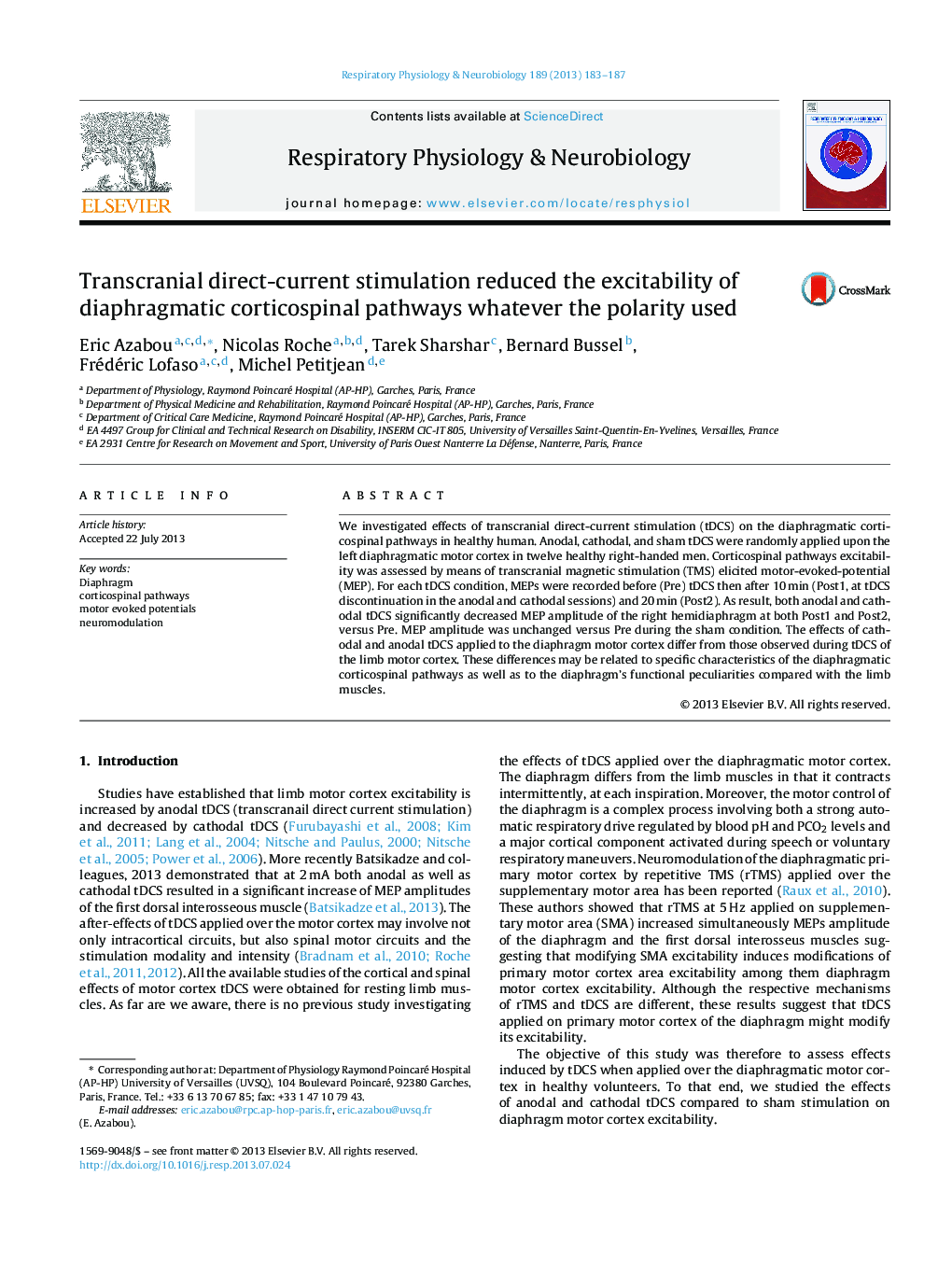| Article ID | Journal | Published Year | Pages | File Type |
|---|---|---|---|---|
| 5926136 | Respiratory Physiology & Neurobiology | 2013 | 5 Pages |
â¢Effects of tDCS on diaphragm's corticospinal pathways are documented by this study.â¢Anodal or cathodal tDCS reduced excitability of diaphragm's corticospinal pathways.â¢Effects of tDCS on the diaphragm differ from those on the limb muscles.
We investigated effects of transcranial direct-current stimulation (tDCS) on the diaphragmatic corticospinal pathways in healthy human. Anodal, cathodal, and sham tDCS were randomly applied upon the left diaphragmatic motor cortex in twelve healthy right-handed men. Corticospinal pathways excitability was assessed by means of transcranial magnetic stimulation (TMS) elicited motor-evoked-potential (MEP). For each tDCS condition, MEPs were recorded before (Pre) tDCS then after 10Â min (Post1, at tDCS discontinuation in the anodal and cathodal sessions) and 20Â min (Post2). As result, both anodal and cathodal tDCS significantly decreased MEP amplitude of the right hemidiaphragm at both Post1 and Post2, versus Pre. MEP amplitude was unchanged versus Pre during the sham condition. The effects of cathodal and anodal tDCS applied to the diaphragm motor cortex differ from those observed during tDCS of the limb motor cortex. These differences may be related to specific characteristics of the diaphragmatic corticospinal pathways as well as to the diaphragm's functional peculiarities compared with the limb muscles.
